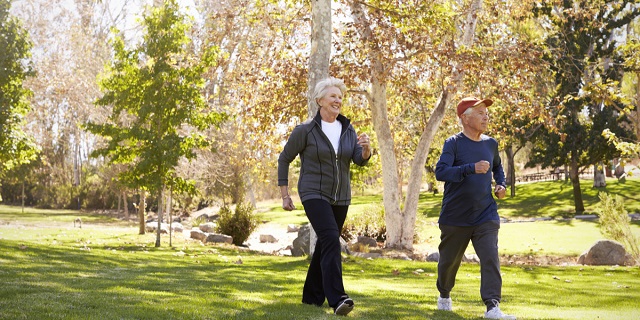Recent updates from health officials indicate that physical distancing has played a major role in helping to minimize the spread of the COVID-19 virus in Canada. While the latest statistics are certainly much better than the worst-case scenarios we were initially warned about, there are still many families that have been impacted by this pandemic. That’s why, even with this initial success, it’s crucial that we maintain physical distancing practises for some time yet.
With warmer weather now just around the corner, it’s understandable that people want to get outside. The good news is that authorities have been clear that even with the need to avoid contact with others, it’s perfectly acceptable to venture outdoors for such things as gardening and to get in a little exercise. Keep in mind though, that you must be careful to maintain a 2-meter separation from anyone who does not live in the same home with you.
In a recent tweet, Canada’s Chief Public Health Officer, Dr. Theresa Tam confirmed that “if not experiencing symptoms, it’s okay to go outside for a walk”. Dr. Tam also suggested avoiding “high-touch” surfaces like handrails and doorknobs and to be sure to “wash your hands well before leaving and as soon as you get back inside”.
Walking as exercise can be beneficial for all age groups, but it is particularly effective for seniors. Here are 5 reasons why older adults should make walking a part of their daily routine.
1. Walking helps maintain a healthy weight
Any form of physical exercise can burn calories and help reduce weight. Walking puts less stress on joints than other forms of physical activities such as running, so it may be a better choice for older participants.
Don’t let the slower pace of walking fool you; as noted in a study by the Harvard Medical School, the benefits of a given physical activity depend on the intensity of the action, the duration of the activity, and the frequency of exercise. So, while it may be less intense than running, walking can still provide similar benefits by simply extending the duration and increasing the frequency of activity.
2. Walking is easier to stick with
Ever notice all the commercials from gyms and exercise equipment companies that hit the airwaves in January each year? These ads are targeting those that have made getting fit a part of their New Year’s resolutions and while gym memberships often increase early in the new year, many will soon lose their enthusiasm.
Those opting for more moderate forms of exercise like walking are more likely to continue to be active. After all, you don’t need to drive to a gym in order to get in some exercise, nor do you need to purchase much in the way of special clothing or gear.
3. Walking improves cardiovascular health
Aerobic exercise including brisk walking is a more moderate level of activity that is conducted over a longer period of time. This results in sustained periods of a higher heart rate and improves blood circulation to the heart and muscles. For those with diabetes, Diabetes Canada recommends aerobic exercise as a way to reduce the complications of diabetes including heart disease.
4. Walking reduces arthritis and inflammatory pain
Physical activity can be a challenge for those suffering from arthritis but as noted in a report from the Mayo Clinic, low-impact exercises like walking, bicycling, and swimming are recommended activities for those dealing with joint pain. Walking helps keep hip and knee joints lubricated and also strengthens the surrounding muscles to further support joints which can reduce the strain on the joint itself.
5. Walking may help slow mental decline
There is mounting evidence that regular exercise can help slow the rate of Vascular Cognitive Impairment (VCI) which is one of the most common types of cognitive dysfunction in older individuals. Similar results were noted in a study produced by the University of British Columbia which found that seniors who walk at least 3 times a week can potentially reduce the impact of Vascular Cognitive Impairment.
The importance of good posture
If you’re thinking of taking up walking as a form of exercise, there are a few things to keep in mind to make the most of this activity. For starters, pay attention to your posture and stand straight without leaning forward as leaning puts a strain on your back muscles. To keep your heart rate up, take smaller, more frequent steps and while you don’t have to run, maintaining a brisk but comfortable pace for you helps maximize the aerobic benefits of walking.




 Travel and lifestyle
Travel and lifestyle